It is fair to say that Uruguay has never been a regular feature on wine lists or shelves in the UK. While wines from Chile and Argentina have cemented their place in the market for value and reliability, neighbouring Uruguay, has been quietly and slowly making its move onto the UK wine scene. With only 6000 hectares under vine (Argentina has 211,000 hectares*), Uruguay is still the fourth largest of the wine producing countries in South America. But, despite being small, both regionally and globally and with only 150 wineries, many of Uruguay’s wines are still worthy of our attention.
As part of Uruguay Wine’s recent Unveiling Uruguay trade tasting in London, I was given the opportunity to taste wines from 18 producers. I was impressed; these wines are something of a game-changer by differentiating and offering wines of quality and innovation at a more premium level than I would have expected.
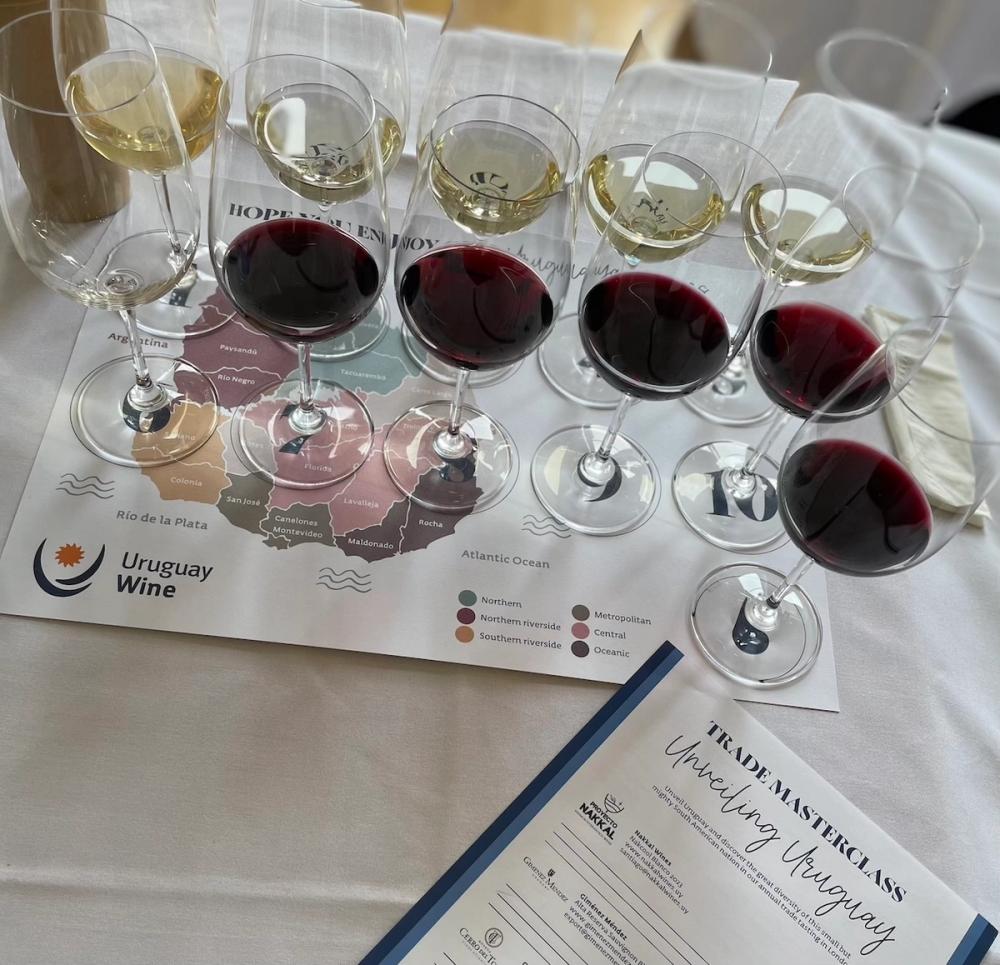
As a wine producing country, Uruguay stands out for several reasons: its climate, soils, size of vineyards, the rolling hills rather than rugged terrain of its neighbours, as well as a strong coastal influence more aligned to the Atlantic conditions of Bordeaux and Galicia, rather than the Pacific influence in Chile.
The major talking point around the room was the variety of soil types across the country. Uruguay has classified 99 different types of soil, ranging from granite, clay, terra rossa, and river gravels. Most of the growing area is to the south and along the coast. Two thirds of the nation live in Montevideo and here is where a new wave of young producers is reviving traditional varieties. The areas of Canelones & Montevideo see over 60% of Uruguay’s wine production while Maldonado to the south-east is the new kid on the block, closer to the coast with poorer soils and a stronger maritime influence.
Speaking with importer Carla Bertellotti, founder of South American importing specialist Vinos Latinos, she believes the wines provide a point of difference for sommeliers, her portfolio of Uruguayan wines attracts fine-dining restaurants as well as the mid-to-higher end.
To date, Uruguay has firmly hung its hat on the grape, Tannat, as it performs well in the humidity and South Atlantic weather.There are, of course, other varieties, in particular Albariño, that are showing great promise.
So, if it wasn’t all just Tannat and Albariño, what was there?
Tasting the wines….
What stood out was the quality and consistency of the wines. Many showed good freshness and a restraint without too much oak. There was a tremendous breadth of varieties beyond Albariño and Tannat - Torrontes, Viognier, Marsanne, Chardonnay, and Petit Manseng, just to name a few. The red Tannat was clearly favoured, yet there were expressive and characterful examples of Cabernet Franc, Marselan, Merlot, Pinot Noir and Malbec. After tasting all of the wines here are my highlights from each winery.Pricing was not readily available but generally the wines range between £16 to £30 retail.
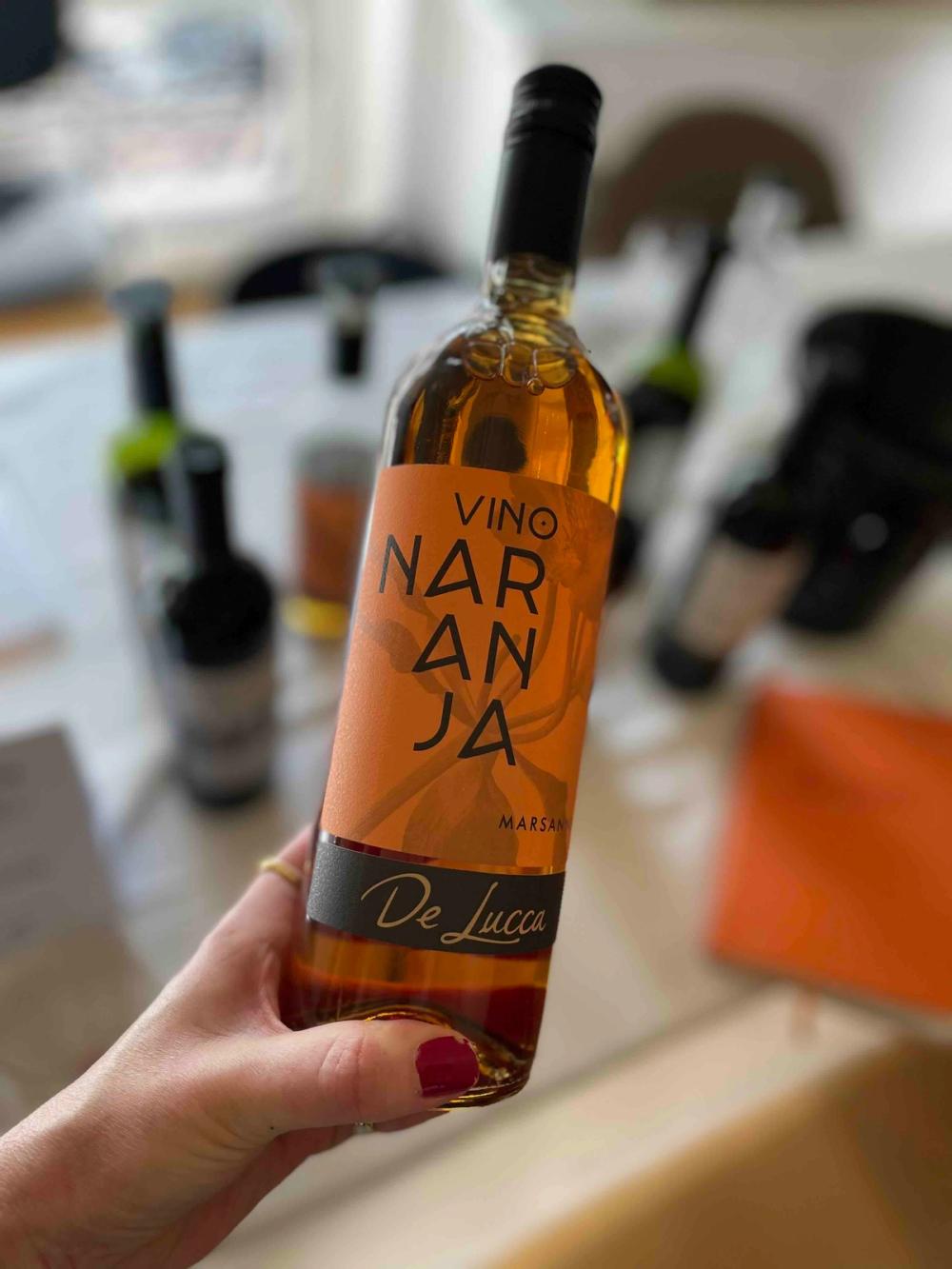
De Lucca
Naranja Marsanne 2023
Kicking off with one of the more intriguing and possibly my favourite wine was De Lucca’s Naranja Marsanne 2023. A skin contact Marsanne that showed precision, generosity, and freshness. With 21 days on skins and six months in third-use barrels, this wine had a resinous character with hints of rosemary and pine. Clearly a foody wine, riper yet remaining linear. Just 600 bottles made, and obviously a hand-sell, but it’s exciting and a great indicator of just what Uruguay can offer. Currently seeking a UK distributor.
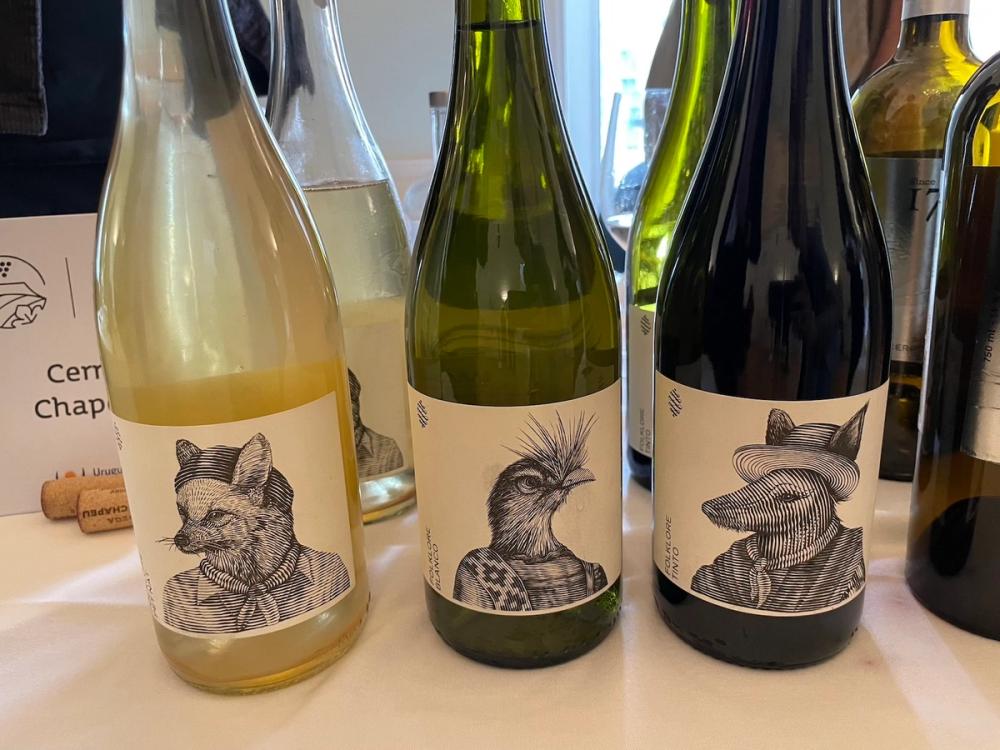
Cerro Chapeau, Rivera
Castel Pujol Folklore Tinto 2023
Somewhat of an outlier being located in the northern part of Uruguay by the Brazilian border, Cerro Chapeau has its folklore range with some of the coolest and elegant wine labels around. The Castel Pujol Folklore Tinto 2023 made from Tannat and first press Petit Manseng skins is fresh, bright with crunchy blue fruits, fine minerality and is a compelling offer.

Pisano, Canelones
Pájaros Pintados Torrontes 2023
With plantings around 500m and four months in stainless steel, this is a savoury, less floral Torrontes. It reminded me a little of Picpoul with its freshness and attractive ease. Delicate with some spice and a beguiling saline freshness on the finish.
Vina Progresso, Canelones
Overground Cabernet Franc 2022
Another example of the new wave of young producers opting for a more forward and fruitier style, with less oak. This Cab Franc shows classic green notes yet good ripeness with crunchy fruit alongside a soft and lush palate. Lovely acidity and freshness yet keeping a silkiness. A different style as it’s ripe yet green, and a possible alternative to Bordeaux (!).

Nakkal Wines, Montevideo
Pet Nat Simple Rosé 2023
The lads Santi Degasperi and Nico Monforte at Nakkal Wines are making low intervention wines. Their Pet Nat Simple Rosé 2023 has a fun and accessible label, delivers in the glass and in the mouth. Made from 100% Tannat, this is fresh, with a clean and juicy palate of raspberries and cranberry. Fun and clean!

Giminéz Méndez, Canelones
Alta Reserva Tannat 2021
Aged nine months in a combination of 50% second fill oak and concrete. This is elegant with an attractive, concentrated core of black and blue fruits, with underlying mineral notes and a freshness that gives it tension. Fine drying tannins make this a great BBQ wine.
Familia Deicas, Canelones
Atlantico Sur Tannat 2022
A much lighter, fresher, ‘modern’ style of Tannat. Bright and juicy with purple fruits, hint of earthy beetroot. Fresh, easy and ‘smashable’ which could be lightly chilled.
Garźon, Maldonado
Single Vineyard Albariño 2023
Single Vineyard Albariño 2023 is made selecting the best 30-40 blocks within the single vineyard, each of which have been identified for their different microclimates. Using tulip-shaped concrete vats and leaving the wine on lees for 6-7 months results in a fruitier style with good concentration and texture.Pineapple and stone fruits are underpinned with mineral undertones.

Campañía Uruguaya de Vinos de Mar, Garzon (Maldonado)
Pinot Noir Maldonaldo 2022
Vinos de Mar have a distinctive premium feel, they are currently seeking an importer. With Sauvignon Blanc and Albariño in their stable, the Pinot Noir stood out with its savoury lifted notes, light bodied style with red fruits and fine chewy tannins. Using Champenois clones 777 and 767 along with 115 gives this elegance and broad appeal. Currently seeking a UK distributor.
Cerro del Toro, Maldonado
Albarino Sobre Lías 2023
Just 2km from the coast, there is a distinctive Atlantic influence and with nine months on lees and some battonage at the start, this Albariño shows a similar green melon character to its sibling, however this has length, texture and mouthfeel giving it an elegance and moreishness.
Brisas, Maldonado
Altos de José Ignacio Reserva Marselan 2022
With a capacity of 5 million litres, Brisas is Uruguay’s biggest winery, Alberto Antonini is their consultant oenologist. Of the Marselans tasted today, this shows a brighter and leaner style, possibly due to the concrete tank fermentation. While aged in oak for 6-12 months, the wine is pretty, juicy, long and luscious. Attractive spice and good concentration with mineral undertones offers a lovely refined example of Marselan.
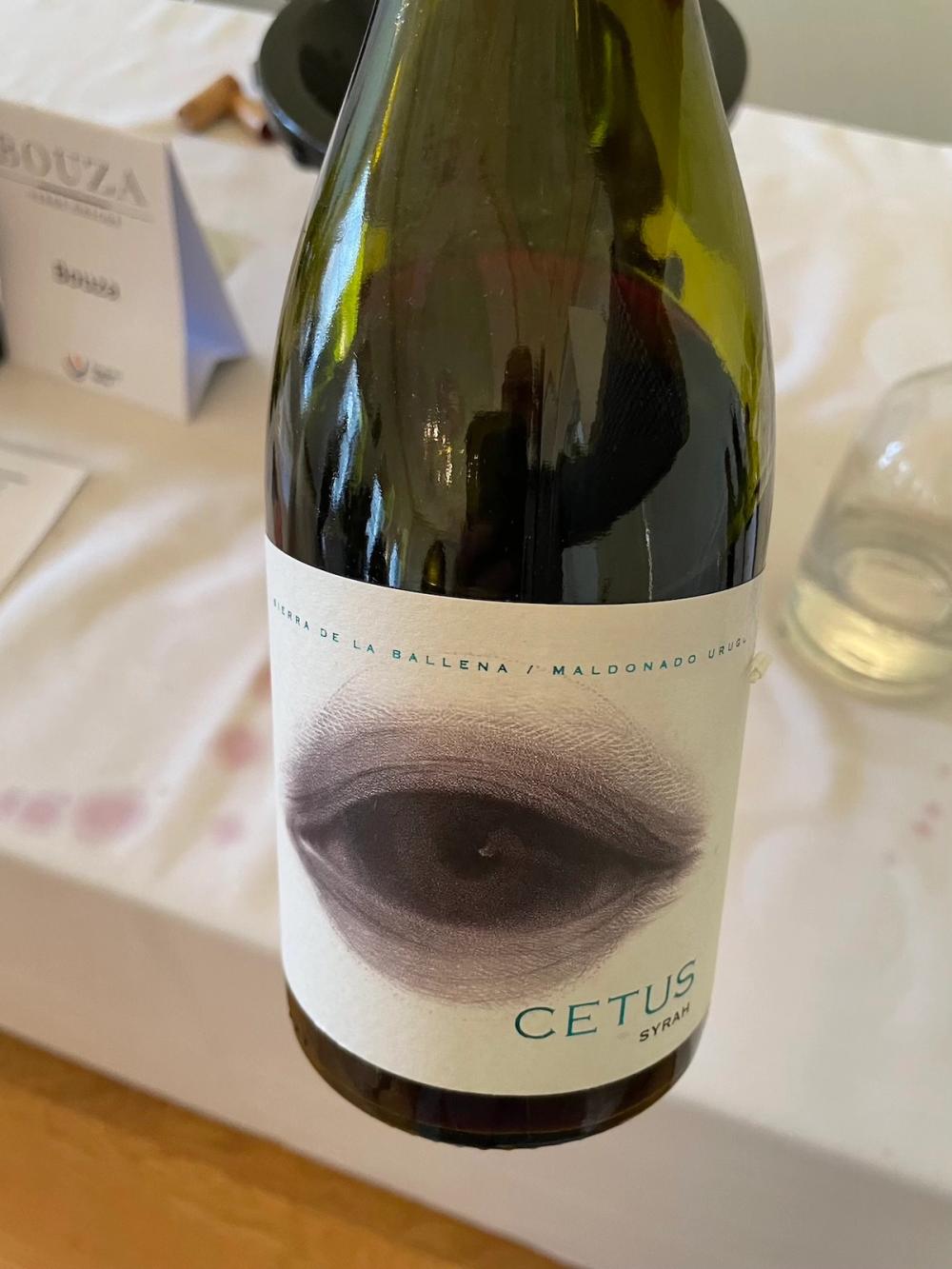
Alto de la Ballena, Maldonado
Cetus Syrah 2018
There were 1300 bottles made of this, their top cuvée. Tank fermented and aged in French oak for 12 months; this is concentrated, rich and plush. Full bodied, more fruit forward with the oak well integrated.
Bouza, Maldonado
Albariño 2023
It is no surprise to learn that Bouza was established by a Galician family – its 2023 Albariño stood out – and for me was the closest to an Albariño from Rias Baixas.Fermentation was a combination of barrel and stainless steel, with 10% in 2nd fill (previously Chardonnay) for 4 months. Zesty, with green and ripe white fruits. Long, fresh and showing classic Albariño character.
Montes Toscanini, Canelones
Gran Tannat Premium 2020
The style here is accessible and slightly more traditional judging from tasting their Gran Tannat Premium 2020.With a little more age, it is rich, intense and dark fruited with lingering oak while the Criado en Roble Chardonnay 2023 showed freshness and was zesty – very accessible drinking with a rounded plush palate. Currently seeking a UK distributor.
Barras de Mahoma, San José
Signature Winemaker Cabernet Franc 2021
Based 150km northwest of Montevideo, Barras de Mahoma produces wines from vines grown on schist soils. Its Signature Winemaker Cabernet Franc 2021 is long and luscious with dark and red berry fruits, the oak handled judiciously offering a pretty, juicy and immediately accessible. Currently seeking a UK distributor.
Finca Las Violetas, Canelones
Finca Las Violetas Blend Bianco 2022
Wines are sourced from several coastal areas. All of the wines on show were supple and accessible with the white blend Finca Las Violetas Blend Blanco 2022 standing out. A blend of Chardonnay, Pinot Gris and Albariño, having had time on lees and part-aged in French oak; the wine was juicy, easy yet precise and characterful. Currently seeking a UK distributor.
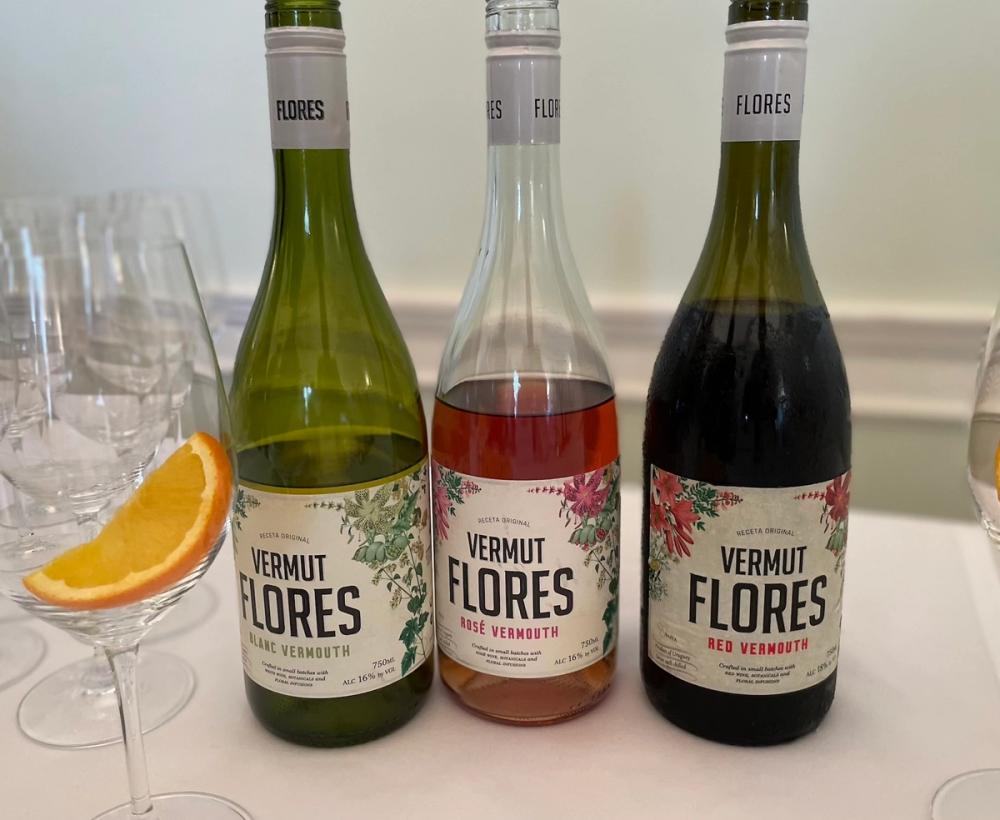
There are also some very rich and unctuous vermouths being made by Vermut Flores. Bottled in clear wine bottles these have 27 aromatics, are almost syrupy yet tasty.Of the three (red, rosé and white) I found the Vermut Flores Blanc the most interesting with its peppercorn and spice notes.
Final thoughts…
Overall, Uruguayan wine has grown both in consistency and quality. Following Uruguay joining the MERCOSUR economic agreement in 1991, new trade avenues opened, and a pathway paved for significant new investment. The investments have taken time to reach fruition but with consultant oenologists such as Paul Hobbs and Alberto Antonini being brought in, together with a bevy of young, passionate, innovative winemakers; Uruguay offers a compelling addition to any wine range.
While pricing tends toward the higher end, the wines are particularly well-suited to independent specialists, restaurants, and bars where wines can be hand-sold. The limited size of the region, the rarity and ‘boutiqeness’ of their offer; wine buyers can be confident they will be investing in well made, quality wines.For those seeking to expand or differentiate their wine range, now may be just the moment for Uruguayan wines to make a splash.
































